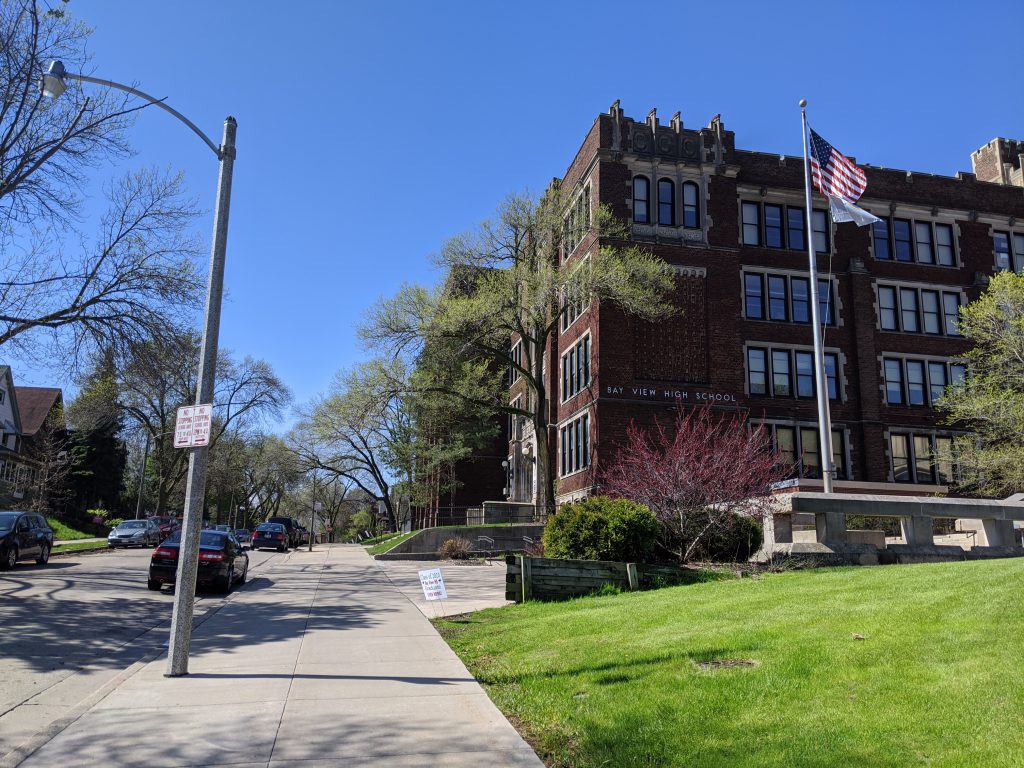MPS Struggles With Shrinking System
With less students and less money, how can MPS 'right-size' the district?
Milwaukee Public Schools (MPS) has been losing about 1,500 students a year for more than a decade, equal to the capacity of three schools per year. That reduces the amount of state funding it receives, compounding a shortfall in this funding that Milwaukee superintendent Keith Posley was blunt about at a June 22 meeting of the Milwaukee school board.
“The money did not come from the state the way we intended,” he noted, but Posley vowed that “we are going to do what we need to do for our children. Yes, we are going to have to do some things differently, but we’re prepared to do that; we’re looking at how we can cut costs in various areas and what we can do to wrap support around schools and students.”
One consideration was “right-sizing” the district to reflect the decline in enrollment. But just how will that be done? A recent study by Wisconsin Policy Forum questioned the continued use of the 2018 MPS facilities study.
But Posley says the study is being updated in an upcoming space utilization study. “Some of our buildings have different uses now in those spaces,” he noted.
Gone are the old student shop areas, as they are replaced with science, technology, engineering, and math (STEM) labs which may now require additional space. And computer labs have been dismantled as computers become an integral part of every classroom.
Staff utilization is as important space utilization, says Posley. He points to a staff compensation study “so that we have all the data needed in order to make an informed decision.”
Combining schools could help fill undersized enrolled classes and help alleviate the teacher shortage. But board members expressed concern that they did not want packed classrooms, noting that parents value smaller classes.
Adria Maddaleni, chief human resources officer for MPS, noted that many smaller high schools, with less enrollment, are unable to offer college bound programs such as Advanced Placement. “If you have a slightly larger building, you have additional staff; you have additional opportunities to provide all of these students with more equitable access to programing.”
In 2000, the Bill and Melinda Gates Foundation poured millions of dollars into small high schools across the nation under the belief that large, comprehensive high schools just don’t work for many students. By 2008, the Foundation had concluded that the effort was not reaping the projected benefits and started pulling the plug on the endeavor. But not every educational expert agrees that small schools were a total failure.
But Milwaukee school board president Marva Herndon believes that small schools didn’t work when several small independent programs were placed in a larger school building. “The co-locations did not work, not just from the charter school side or whatever, the district did the same thing, where they combined two or three schools.” Today, only a handful of multiplex or co-location buildings still operate in MPS.
Posley cautioned that you can’t close one school and assume its students will transfer to another MPS school. “What we have learned over… the last 20 years right-sizing… is that students will go to school “X” and we will close school “Y” and two years down the road, we’ve got schools “X” and “Y” closed. So, we have to look at all those lessons learned as well – we can’t just say, because we build it, they will go.” The whole community must be involved, he emphasized.
School board director Henry Leonard built upon Posley’s observation. “If we just move students from one area or three or four buildings from one area and tell them, ‘Hey, you’re going,’ has proven to be disastrous. You can just look at the West Allis School District last year and how the 7th district [Leonard’s Milwaukee school board district] picked up a load of West Allis students. My assumption was that those students would be going back to West Allis. No, they’re staying in MPS which is good for us, but it also tells me that sort of validates some of the research about that.”
Educational experts are clear on what works and what doesn’t in closing schools. Douglas N. Harris, Tulane University, and Valentina Martinez-Pabon, Harvard, writing for Education Week, listed other factors in deciding which and when schools should be closed:
“Education leaders avoid school closures at almost any cost,” they stress, “but sometimes their enrollment-driven budgets cannot bear the expense of all low-enrollment schools remaining open. And closing based on low enrollment creates disruption for the fewest people… But what about school quality as a deciding factor? Student test-score levels are tightly correlated with these demographic features, but student-growth measures are not. So, when closures are necessary, doing it based on growth is also more equitable.”
Other factors should be considered, they note: “If a district has a great team in a failing building, it’s essential to keep that team together. One way to do that… is to move whole teams from one building to another to keep them—and their success—intact.”
But Harris and Martinez-Pabon say school districts must face a hard reality: “As a nation, we are amid a decade-long, steep decline in birthrates.”
School districts all across Wisconsin are facing enrollment declines and closing schools.
Yet, some Milwaukee school board members hold out hope for increasing enrollment.
“We are not taking the climate crisis seriously enough,” says Board director Missy Zombor. ”I’ve seen a number of reports that the Midwest, especially around the Great Lakes, will eventually become a climate haven.” But she admits, “that probably won’t be actualized by 2027-2028; it could in our lifetime.” Zombor suggests that MPS should consult with climate experts. “Yes, I know the school age population in Milwaukee is probably decreasing, but if the projections are true, it could increase.”
Board director Megan O’Halloran noted a related factor, Milwaukee Mayor Cavalier Johnson‘s goal to increase the city’s population. “I know the mayor has talked about the one million plan. He would love for Milwaukee to be a city of one million residents.” That would certainly help build MPS enrollment, but climate warming also presents another issue.
“We need to be clear that changes need to be made to our buildings,” O’Halloran warned. “Our buildings are not air-conditioned.”
If you think stories like this are important, become a member of Urban Milwaukee and help support real, independent journalism. Plus you get some cool added benefits.
K-12 Education
-
The Unknown MPS Office
 Jun 26th, 2024 by Terry Falk
Jun 26th, 2024 by Terry Falk
-
Who Is Eduardo Galvan?
 Jun 19th, 2024 by Terry Falk
Jun 19th, 2024 by Terry Falk
-
How Will School Board Hire New Superintendent?
 Jun 10th, 2024 by Terry Falk
Jun 10th, 2024 by Terry Falk























These leaders within the system do not sound like very bright people. Improving the quality of education within this failed system should be priority 1, 2 and 3!
MPS will not improve until the property tax payers. community / parent demand more. The current system is staffed by teachers who do not live in the district and do not have a vested interest in the community
. Recruit teachers willing to live in the District.
Focus on reading ,comprehension, critical thinking
and writing skill .Test scores will not improve if students cannot read .
MPS focus on union demands and money will not produce needed results.
Close failing Schools